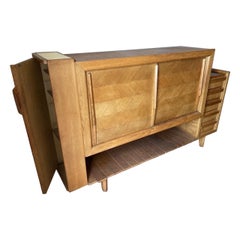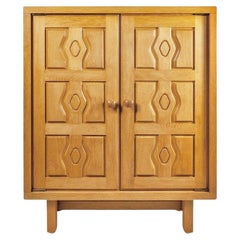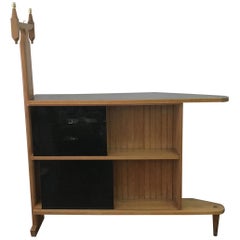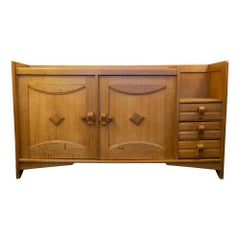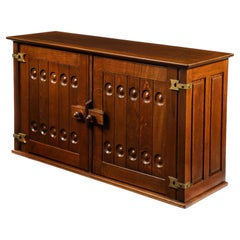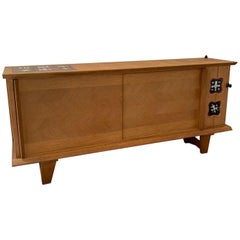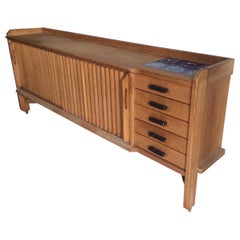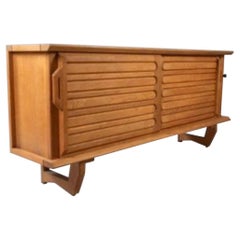Guillerme And Chambron Storage
Vintage 1970s French Mid-Century Modern Cabinets
Oak
Vintage 1950s French Mid-Century Modern Sideboards
Oak
Vintage 1950s French Cabinets
Oak
Mid-20th Century French Mid-Century Modern Dry Bars
Oak
Vintage 1960s French Mid-Century Modern Buffets
Oak
Mid-20th Century French Brutalist Cabinets
Bronze
Vintage 1960s French Modern Buffets
Ceramic, Oak
Vintage 1960s French Modern Sideboards
Oak
Vintage 1960s French Modern Sideboards
Ceramic, Oak
Vintage 1950s French Sideboards
Oak
Vintage 1960s French Cabinets
Oak, Glass
Mid-20th Century French Modern Secretaires
Ceramic, Oak
Vintage 1960s French Mid-Century Modern Wardrobes and Armoires
Brass
Vintage 1960s French Cabinets
Oak
Vintage 1960s French Mid-Century Modern Wardrobes and Armoires
Oak
Vintage 1970s French Mid-Century Modern Shelves
Oak
Vintage 1960s French Secretaires
Wood
Vintage 1960s Italian Mid-Century Modern Sideboards
Brass
Vintage 1960s French Mid-Century Modern Cabinets
Ceramic, Oak
Vintage 1960s French Cabinets
Oak
Vintage 1960s French Mid-Century Modern Cabinets
Glass, Oak
Mid-20th Century French Cabinets
Brass
Vintage 1960s French Mid-Century Modern Sideboards
Oak, Ceramic
Mid-20th Century French Mid-Century Modern Buffets
Oak
Late 20th Century French Modern Commodes and Chests of Drawers
Brass
Late 20th Century French Modern Commodes and Chests of Drawers
Brass
Vintage 1960s French Mid-Century Modern Wardrobes and Armoires
Brass
Vintage 1960s French Mid-Century Modern Wardrobes and Armoires
Oak
Vintage 1960s French Mid-Century Modern Credenzas
Ceramic, Oak
Vintage 1960s French Mid-Century Modern Wardrobes and Armoires
Oak
Vintage 1960s French Secretaires
Laminate, Oak
Vintage 1960s French Mid-Century Modern Sideboards
Oak
Vintage 1970s French Mid-Century Modern Wardrobes and Armoires
Oak
Vintage 1960s French Mid-Century Modern Sideboards
Oak, Ceramic
Vintage 1960s French Mid-Century Modern Cabinets
Brass
Vintage 1960s French Brutalist Cupboards
Oak
Vintage 1960s French Mid-Century Modern Shelves
Brass
Vintage 1960s French Secretaires
Brass
Mid-20th Century French Mid-Century Modern Sideboards
Brass
Mid-20th Century French Mid-Century Modern Secretaires
Ceramic, Oak
Vintage 1960s French Mid-Century Modern Sideboards
Oak
Vintage 1960s French Mid-Century Modern Buffets
Oak
Vintage 1960s French Mid-Century Modern Buffets
Glass, Oak
Vintage 1970s French Shelves
Oak
Vintage 1960s French Mid-Century Modern Wardrobes and Armoires
Brass
Vintage 1960s French Mid-Century Modern Sideboards
Ceramic, Oak
Vintage 1970s French Mid-Century Modern Wardrobes and Armoires
Oak
Vintage 1960s French Mid-Century Modern Sideboards
Oak, Ceramic
Vintage 1970s French Mid-Century Modern Wardrobes and Armoires
Oak
Vintage 1970s French Mid-Century Modern Wardrobes and Armoires
Oak
Vintage 1960s French Mid-Century Modern Bookcases
Oak
Vintage 1970s French Mid-Century Modern Wardrobes and Armoires
Oak
Vintage 1970s French Mid-Century Modern Wardrobes and Armoires
Oak
Vintage 1960s French Mid-Century Modern Bookcases
Oak
Vintage 1960s French Mid-Century Modern Wardrobes and Armoires
Oak
Vintage 1960s French Mid-Century Modern Sideboards
Oak
Vintage 1960s French Mid-Century Modern Cabinets
Oak
Vintage 1970s French Mid-Century Modern Sideboards
Brass
Mid-20th Century French Mid-Century Modern Wardrobes and Armoires
Ceramic, Oak
Vintage 1950s French Mid-Century Modern Wardrobes and Armoires
Oak
- 1
Guillerme And Chambron Storage For Sale on 1stDibs
How Much is a Guillerme And Chambron Storage?
Guillerme et Chambron for sale on 1stDibs
Robert Guillerme and Jacques Chambron, the French creative duo behind Votre Maison, met under unusual circumstances: They discussed design while imprisoned in a forced labor camp. The pair’s combined talents later resulted in modern, sculptural furniture — today, vintage Guillerme et Chambron desks, dining tables, chairs and other pieces still look conceptually playful and vibrant but could fit harmoniously into any home.
Guillerme had graduated from the École Boulle in 1934 with a degree in design and architecture, and Chambron had studied at the School of Applied Arts in Reims. They were captured by the Germans in East Prussia during the Second World War and struck up a friendship over their mutual love for all things design.
After the war ended, Guillerme moved to Lille in northern France; Chambron left his job as a painter and decorator in Paris and joined him in 1948. In 1949, the pair met Émile Dariosecq, a skilled cabinetmaker who enthusiastically agreed to manufacture the duo’s designs, leading to the start of Votre Maison.
Guillerme and Chambron were as prolific as they were detailed, producing more than 2,000 pieces in the second half of the 20th century out of a former gun factory. Their furniture, which was mostly made with different tones of waxed oak, adhered to the trends of design that emerged after the war: mid-century modernism.
European furniture in the postwar period largely prioritized function as much as it did form and lacked any unnecessary ornamentation. Guillerme and Chambron wanted people to actually use their furniture, not just look at it. That design philosophy was a pillar of their company, its name translating to “your house” in French. Their signature touches included ornate tiles, hidden drawers and vibrant textiles on pieces such as desks, tables, shelving, lighting, benches and other seating. One of Votre Maison’s most famous and popular pieces was the Grand Repos armchair, a stately, high-backed wide piece with a skeletal oak frame, six spindles and plush cushions.
While Guillerme and Chambron were a team, they handled different aspects of the business: Guillerme designed much of the furniture and Chambron concentrated on decor. Votre Maison was a full-service design business. In 1983, the dynamic duo passed on their company to Chambron’s son, Hervé, a designer and graduate of École Boulle.
Find a collection of vintage Guillerme et Chambron furniture on 1stDibs.
Finding the Right Storage-case-pieces for You
Of all the vintage storage cabinets and antique case pieces that have become popular in modern interiors over the years, dressers, credenzas and cabinets have long been home staples, perfect for routine storage or protection of personal items.
In the mid-19th century, cabinetmakers would mimic styles originating in the Louis XIV, Louis XV and Louis XVI eras for their dressers, bookshelves and other structures, and, later, simpler, streamlined wood designs allowed these “case pieces” or “case goods” — any furnishing that is unupholstered and has some semblance of a storage component — to blend into the background of any interior.
Mid-century modern furniture enthusiasts will cite the tall modular wall units crafted in teak and other sought-after woods of the era by the likes of George Nelson, Poul Cadovius and Finn Juhl. For these highly customizable furnishings, designers of the day delivered an alternative to big, heavy bookcases by considering the use of space — and, in particular, walls — in new and innovative ways. Mid-century modern credenzas, which, long and low, evolved from tables that were built as early as the 14th century in Italy, typically have no legs or very short legs and have grown in popularity as an alluring storage option over time.
Although the name immediately invokes images of clothing, dressers were initially created in Europe for a much different purpose. This furnishing was initially a flat-surfaced, low-profile side table equipped with a few drawers — a common fixture used to dress and prepare meats in English kitchens throughout the Tudor period. The drawers served as perfect utensil storage. It wasn’t until the design made its way to North America that it became enlarged and equipped with enough space to hold clothing and cosmetics. The very history of case pieces is a testament to their versatility and well-earned place in any room.
In the spirit of positioning your case goods center stage, decluttering can now be design-minded.
A contemporary case piece with open shelving and painted wood details can prove functional as a storage unit as easily as it can a room divider. Alternatively, apothecary cabinets are charming case goods similar in size to early dressers or commodes but with uniquely sized shelving and (often numerous) drawers.
Whether you’re seeking a playful sideboard that features colored glass and metal details, an antique Italian hand-carved storage cabinet or a glass-door vitrine to store and show off your collectibles, there are options for you on 1stDibs.

